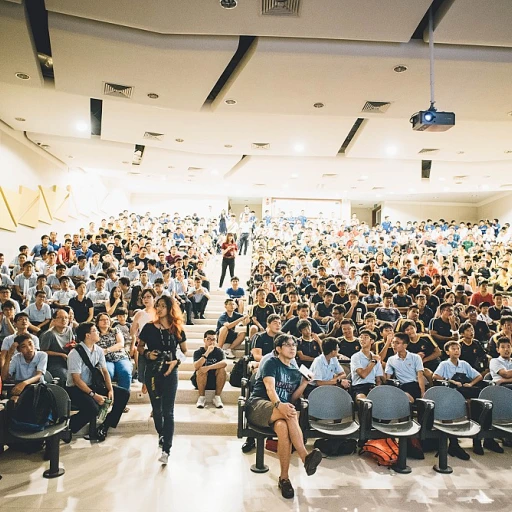
Decoding the Long-Term Temporary Role
Deciphering the Dynamics of Extended Temporary Employment
At the intersection of traditional employment and the evolving gig economy, long-term temporary roles occupy a unique space in the job market. Unlike short-term temp jobs, these positions offer the stability of extended employment without transitioning into permanent roles. The concept can seem paradoxical, as the term 'temporary' suggests an eventual conclusion, yet many workers find themselves in temporary roles that extend well beyond initial expectations.
For businesses and employees alike, long-term temporary employment presents a range of both challenges and benefits. On one hand, it allows companies flexibility in staffing, enabling them to adapt to market needs without the commitments tied to full-time permanent positions. For workers, it can serve as a valuable opportunity to build skills and experience in different industries, often providing a stepping stone toward permanent jobs.
However, this type of employment can blur the lines between temporary and permanent work. Without clear paths to permanent positions, temporary workers may face job insecurity, impeding their long-term career growth. This essence of ambiguity necessitates a careful look into the implications for all involved parties.
Legal regulations may also come into play here, as employees must stay informed about their rights and obligations. For instance, understanding sick leave policies is crucial, as seen in regions like New Jersey, where sick leave regulations for contractors demand attention from both employers and temp workers.
In essence, comprehending the structure and nuances of extended temporary roles is fundamental for job seekers navigating the landscape of temporary work. As you delve deeper into this topic, examining both the positives and the hurdles faced, you'll gain a clearer understanding of the evolving nature of employment in today’s fast-paced world.
The Role of Employee Feedback in Temporary Positions
Evaluating Employee Sentiments in Temporary Roles
In today’s ever-evolving job market, temporary roles have become a significant part of many companies' staffing strategies. The importance of employee feedback in these temporary positions cannot be overstated, as it plays a crucial role in understanding and improving the work environment for temporary workers. By soliciting feedback from these employees, companies can better cater to their needs and improve the overall temp job experience. One of the key aspects of gathering meaningful employee feedback is creating an environment where temporary workers feel comfortable sharing their thoughts. This can be challenging, as temporary employees often feel less integrated into the company's culture compared to their permanent counterparts. Companies can address this by fostering a sense of belonging and encouraging open communication channels. Moreover, feedback from temporary workers can provide insightful perspectives on company operations. These employees bring fresh eyes to the organization and may highlight inefficiencies or areas for improvement that may be overlooked by permanent staff. By integrating this feedback into strategic planning, businesses can enhance their processes and boost efficiency. Additionally, understanding the feedback from temporary employees can help in assessing the mutual benefits and challenges of these temp roles. Employers can gain insights into the reasons why workers choose temporary employment over permanent roles, and whether the company’s offerings align with these preferences. To establish a robust feedback program, companies should ensure anonymity and regular opportunities for temporary workers to voice their opinions. This can be structured through surveys, one-on-one meetings, or feedback sessions, depending on the company’s size and capabilities. By treating feedback from both temporary and permanent roles with equal importance, organizations can create a more cohesive and productive work environment. For further insights into the nuances of temporary employment and the benefits of fostering a good feedback culture, consider this comprehensive exploration of what employers can ask and the nuances involved in temporary setups: Can employers ask for a doctor’s note after just one day off?.Challenges Faced by Employees in Long-Term Temporary Roles
Navigating Temporary Work Setup Challenges
The landscape of temporary employment is filled with unique challenges that employees must navigate. Among these hurdles, the unpredictable nature of temporary roles can be daunting. Employees in long-term temporary positions often face uncertainty regarding job security and career progression, factors that can significantly impact their morale and productivity. These workers frequently deal with the anxiety of not knowing when their current assignment will end or transition into a permanent role. Temporary positions can also limit opportunities for skill development. In a temp job, workers may not receive the same training or access to resources as their permanent counterparts. This disparity can hinder their long-term career growth and result in a lack of engagement in their roles. Moreover, temp workers might not experience the same inclusion in company culture, often feeling like outsiders. Employee feedback becomes crucial under such circumstances. A well-structured feedback system can bridge the gap between temporary and permanent employees, cultivating a sense of belonging and commitment. Employers can better understand and address these challenges by actively seeking feedback from temporary workers. To gain insights into effective feedback strategies, interested parties can explore various effective strategies for requesting employee feedback. Temporary roles also come with the challenge of balancing flexibility with consistency. Employees must adapt to different work environments and company cultures with each new assignment. While such roles provide flexibility, the transition between varying job expectations can be taxing. Companies can support their temp workers by creating a more consistent onboarding process and offering mentorship opportunities to ease these transitions. Ultimately, addressing these challenges requires open lines of communication and an understanding of the unique dynamics at play in temporary employment. Properly managed, temporary roles can offer not only flexibility but also a valuable chance for employees to build diverse experience, ultimately benefitting both the individual worker and the organization.Benefits of Long-Term Temporary Positions
Advantages of Long-Term Temporary Positions
Long-term temporary roles offer a unique blend of advantages, drawing from both temporary and permanent employment models. While the nature of these positions might come with their own set of challenges, as previously discussed, they also offer numerous benefits that appeal to both job seekers and companies alike.- Flexibility in Employment: A major advantage of long-term temporary positions is the flexibility they offer. Employees can take advantage of the opportunity to explore different job roles without committing to a permanent position. This flexibility can be especially appealing for workers seeking variety in their career paths.
- Skill Development and Experience: Temporary roles often provide employees with the chance to work in various departments within a company, gaining a wide range of skills and experience over time. This can enhance their resume and increase their employment prospects for future permanent job opportunities.
- Networking Opportunities: While working in temporary roles across various companies and industries, employees can build a broad professional network. These connections can be invaluable in securing permanent roles or transitioning into other long-term careers.
- Understanding Company Culture: Before committing to a permanent role, employees have the chance to understand the organizational culture and work environment. This experience can inform their decision when considering a permanent position.
- Potential for a Temp-to-Perm Transition: Many companies use long-term temporary positions as a method to evaluate an employee’s performance and fit within the organization. Successful temporary workers might be offered a permanent role, providing a stable career path after proving their capabilities.
- Bridging Employment Gaps: For job seekers who may have gaps in their employment history, temporary roles provide a constructive way to bridge these periods, maintaining their professional momentum and mitigating potential concerns by future employers regarding breaks in employment.












